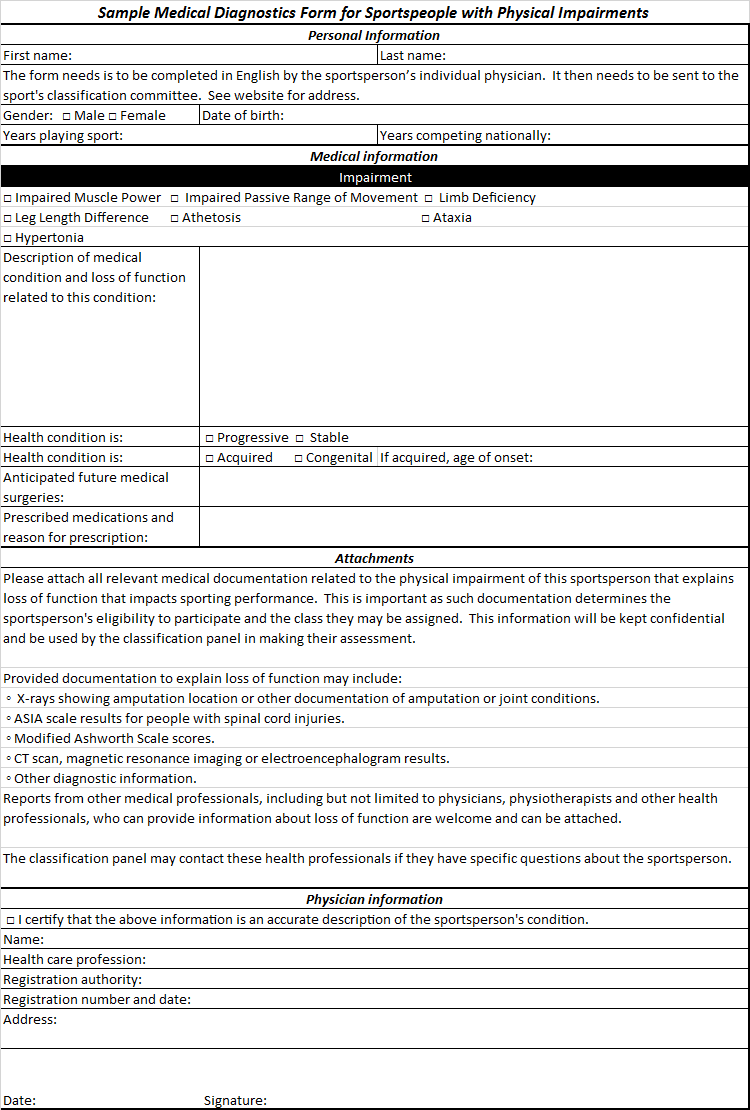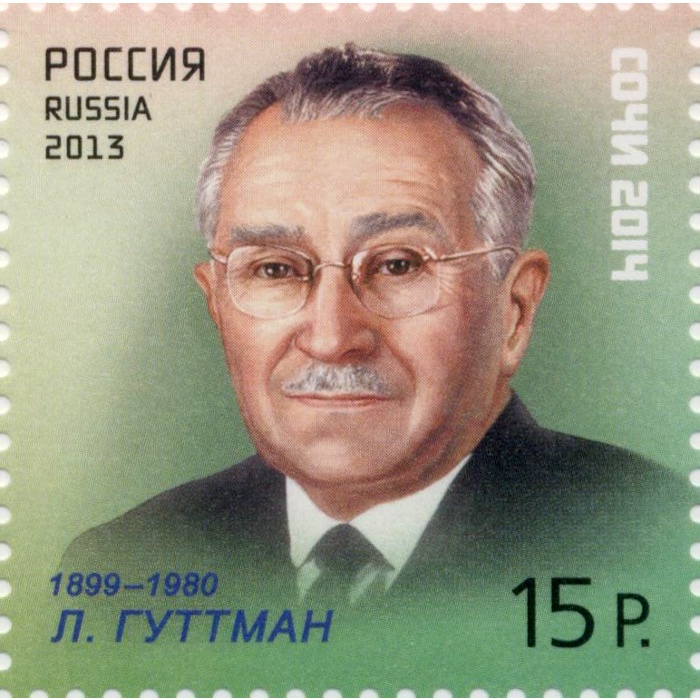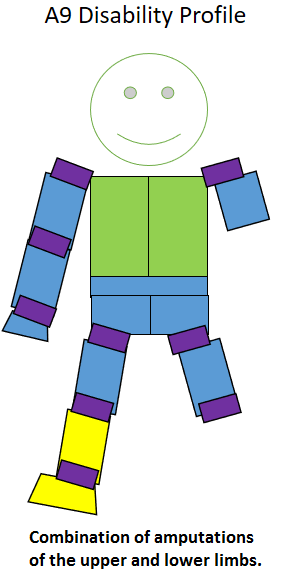|
CP3 (classification)
CP3 is a disability sport classification specific to cerebral palsy. In many sports, it is grouped inside other classifications to allow people with cerebral palsy to compete against people with other different disabilities but the same level of functionality. Compared higher number CP classes, they have increased issues with head movement and trunk function. They tend to use wheelchairs on a daily basis though they may be ambulant with the use of assistive devices. Sportspeople in this class are eligible to participate in a number of sports on the elite level. They include athletics, cycling, skiing, swimming, wheelchair tennis, archery, wheelchair fencing, wheelchair curling, table tennis, shooting, sailing, powerlifting, para-equestrian, rowing and archery. In some of these sports, different classification systems or names for CP3 are used. Because CP3 sportspeople use wheelchairs in most of the classes they compete in, they need to attend classification events while in the ... [...More Info...] [...Related Items...] OR: [Wikipedia] [Google] [Baidu] |
Disability Sport Classification
Disability sports classification is a system that allows for fair competition between people with different types of disabilities. Historically, the process has been overseen by 2 groups: specific disability type sport organizations that cover multiple sports, and specific sport organizations that cover multiple disability types including amputations, cerebral palsy, deafness, intellectual impairments, les autres and short stature, vision impairments, spinal cord injuries, and other disabilities not covered by these groups. Within specific disability types, some of the major organizations have been: CPISRA for cerebral palsy and head injuries, ISMWSF for spinal cord injuries, ISOD for orthopaedic conditions and amputees, INAS for people with intellectual disabilities, and IBSA for blind and vision impaired athletes. Amputee sports classification is a disability specific sport classification used for disability sports to facilitate fair competition among people with different types ... [...More Info...] [...Related Items...] OR: [Wikipedia] [Google] [Baidu] |
Paralympic Games
The Paralympic Games or Paralympics, also known as the ''Games of the Paralympiad'', is a periodic series of international multisport events involving athletes with a range of physical disabilities, including impaired muscle power and impaired passive range of movement, limb deficiency, leg length difference, short stature, hypertonia, ataxia, athetosis, vision impairment and intellectual impairment. There are Winter and Summer Paralympic Games, which since the 1988 Summer Olympics in Seoul, South Korea, are held almost immediately following the respective Olympic Games. All Paralympic Games are governed by the International Paralympic Committee (IPC). The Paralympics has grown from a small gathering of British World War II veterans in 1948 to become one of the largest international sporting events by the early 21st century. The Paralympics has grown from 400 athletes with a disability from 23 countries in Rome 1960, where they were proposed by doctor Antonio Maglio, to 4, ... [...More Info...] [...Related Items...] OR: [Wikipedia] [Google] [Baidu] |
Bench Test For Disability Sports
Bench or The Bench can refer to: Furniture *Bench (furniture), a long seat *Workbench, a table at which manual work is done *Countertop or benchtop Arts * ''The Bench'' (2000 film), a Danish film * ''The Bench'' (TV series), a 2001 British series * ''The Bench'' (Hogarth), a painting by William Hogarth * ''The Bench'' (book), a 2021 children's book by Meghan, Duchess of Sussex Business * Bench (British clothing brand) *Bench (Philippine clothing brand) * Bench Accounting, a company Geology *Bench (geology), a long, relatively narrow strip of relatively level or gently inclined land of differing origins that is bounded by distinctly steeper slopes above and below it *Benches, steps cut into the side of open-pit mines Law and politics *Bench (law), the location where a judge sits while in court, often a raised desk in a courtroom; also refers to the judiciary as a whole, and to a group of judges hearing a case and judging on a case **Bench, the panel or body of justices of the pe ... [...More Info...] [...Related Items...] OR: [Wikipedia] [Google] [Baidu] |
S4 (classification)
S4, SB3, SM4 are disability swimming classifications used for categorising swimmers based on their level of disability. Swimmers in this class have coordination problems affecting all four of their limbs, or have movement in their arms but no trunk or leg function. They also generally have weakness in their hands and arms. A variety of disabilities are represented by this class including people with quadriplegia from spinal cord injury or similar. Events this class can participate in include 50m and 100m Freestyle, 200m Freestyle, 50m Backstroke, 50m Butterfly, 50m Breaststroke, and 150m Individual Medley events. The class competes at the Paralympic Games. Sport This classification is for swimming. In the classification title, S represents Freestyle, Backstroke and Butterfly strokes. SB means breaststroke. SM means individual medley. Swimming classifications are on a gradient, with one being the most severely physically impaired to ten having the least amount of physical dis ... [...More Info...] [...Related Items...] OR: [Wikipedia] [Google] [Baidu] |
S3 (classification)
S3, SB2, SM3 are disability swimming classifications used for categorising swimmers based on their level of disability. People in this class have decent arm and hand function, but no use of their trunk and legs. They have severe disabilities in all their limbs. Swimmers in this class have a variety of different disabilities including quadriplegia from spinal cord injury, severe cerebral palsy and multiple amputations. Events this class can participate in include 50m and 100m Freestyle, 200m Freestyle, 50m Backstroke, 50m Butterfly, 50m Breaststroke and 150m Individual Medley events. The class competes at the Paralympic Games. Definition This classification is for swimming. In the classification title, S represents Freestyle, Backstroke and Butterfly strokes. SB means breaststroke. SM means individual medley. Swimming classifications are on a gradient, with one being the most severely physically impaired to ten having the least amount of physical disability. Jane Buckley, writi ... [...More Info...] [...Related Items...] OR: [Wikipedia] [Google] [Baidu] |
LW11
LW11 is a Para-alpine skiing classification, para-alpine and Para-Nordic skiing classification, para-Nordic sit skiing ''sport class'', a classification defined by the International Paralympic Committee (IPC for people with paralysis in the lower extremities and people with cerebral palsy that affects the lower half of the body. Outside of skiing, the competitor in this class is unable to walk. For international competitions, classification is done through IPC Alpine Skiing or IPC Nordic Skiing. For sub-international competitions, classification is done by a national federation such as Alpine Canada. In para-alpine skiing, the skier uses a mono-ski, while para-Nordic skiers use a two ski sit-ski. Skiers in this class use Outrigger ski, outriggers, and are required to wear special helmets for some para-alpine disciplines. In learning to ski, one of the first skills learned is getting into and out of the ski, and how to position the body in the ski in order to maintain balance. The sk ... [...More Info...] [...Related Items...] OR: [Wikipedia] [Google] [Baidu] |
LW10
LW10 is a para-alpine and para-Nordic sit-skiing classification for skiers who cannot sit up without support. For international skiing competitions, classification is conducted by IPC Alpine Skiing and IPC Nordic Skiing, while national federations such as Alpine Canada handle classification for domestic competitions. In para-alpine skiing, the skier uses a mono-ski, which is required to have breaks on both sides of the ski. The para-Nordic sit-ski configuration has two skis. Skiers in this class use outrigger skis for balance, as leverage to right themselves when they fall, and for turning. A factoring system is used in the sport to allow different classes to compete against each other when there are too few individual competitors in one class in a competition. Factoring for the 2011/2012 alpine ski season was done based on subclass, with LW10.1 factoring being 0.7234 for Slalom, 0.7794 for Giant slalom, 0.7942 for super-G and 0.8004 for downhill, and LW10.2 factoring being 0 ... [...More Info...] [...Related Items...] OR: [Wikipedia] [Google] [Baidu] |
H1 (classification)
H1 is a para-cycling classification. It includes people with a number of disability types including spinal cord injuries and cerebral palsy. Handcycles that can be used by people in races include the AP2 recumbent and AP3 recumbent. The classification competes at the Paralympic Games and has international rankings done by the UCI. Definition Union Cycliste Internationale (UCI) defines H1 as: * Tetraplegia C6 or above and severe athetosis/ataxia/dystonia * Tetraplegic with impairments corresponding to a complete cervical lesion at C6 or above * Complete loss of trunk stability and lower limb function * Limited extension of the elbow with a muscle score of 6 (total of both tri- ceps) * Limited handgrip * Non-spinal cord injury, but functional ability profile equivalent to sport class H 1.1 * Impaired sympathetic nerve system * Recumbent position in handbike mandatory (AP-bikes) * Severe athetosis/ataxia/dystonia and elbow extension limitation * Asymmetric or symmetric quadriplegia wi ... [...More Info...] [...Related Items...] OR: [Wikipedia] [Google] [Baidu] |
F55 (classification)
F55 is a disability sport classification for disability athletics for people who compete in field events from a seated position. Sportspeople in this class have full arm function, partial trunk function and no lower limb function. Different disability groups compete in this class, including people with spinal cord injuries. The classification was previously known as lower 3, upper 4. Sport International Paralympic Committee defined this classification on their website in July 2016, "Athletes have full function of the arms and partial to full trunk muscle power. There is no movement in the lower limbs. Athletes with bilateral hip disarticulations are appropriately placed in this class." The Spectator Guide for the Rio Paralympics defines the class as, "wheelchair athletes (effects of polio, spinal cord injuries and amputations)" People competing in the seated position in this class generally have good balance, good trunk rotations and can move their upper body backwards and ... [...More Info...] [...Related Items...] OR: [Wikipedia] [Google] [Baidu] |
Para-equestrian
Para-equestrian is an equestrian sport governed by the International Federation for Equestrian Sports (FEI), and includes two competitive events: One is para-equestrian dressage, which is conducted under the same basic rules as conventional dressage, but with riders divided into different competition grades based on their functional abilities. The other is para-equestrian driving, which operates under the same basic rules as combined driving but places competitors in various grades based on their functional abilities. History The first official Paralympic Games was held in Rome in 1960. The Games were initially open only to athletes in wheelchairs; at the 1976 Summer Games, athletes with different disabilities were included for the first time at a Summer Paralympics. Competitors with cerebral palsy classifications were allowed to compete at the Paralympic games for the first time at the 1984 Summer Paralympics. At the 1992 Summer Paralympics, all disability types were eli ... [...More Info...] [...Related Items...] OR: [Wikipedia] [Google] [Baidu] |
T54 (classification)
T54 is a disability sport classification for disability athletics in the track and jump events. The class includes people with spinal cord injuries who compete using a wheelchair in track events. They have paraplegia, but have normal hand and arm function, normal or limited trunk function, and no leg function. This class includes CP-ISRA classes CP3 and CP4, and some athletes in ISOD classes A1, A2 and A3. Definition This classification is for track and jump events in disability athletics. This classification is one of several classifications for athletes with spinal cord injuries. Similar classifications are T51, T52 and T53. The International Paralympic Committee defined this class in 2011 as, "These athletes will have normal arm muscle power with a range of trunk muscle power extending from partial trunk control to normal trunk control. Athletes who compete in this group may have significant leg muscle power. These athletes have reasonable to normal trunk control whi ... [...More Info...] [...Related Items...] OR: [Wikipedia] [Google] [Baidu] |
T53 (classification)
T53 is disability sport classification for disability athletics. The class includes people with a number of different types of disabilities including spinal cord injuries. People in this class have full use of their arms but have no or limited trunk function. Similar classifications are T51, T52, and T54. People in this class have a functional upper limbs, but limited trunk usage and limited lower limb functionality. During classification, they both undergo a bench test of muscle strength and demonstrate their skills in athletics. People in this class include Tanni Grey-Thompson (GBR), Samantha Kinghorn (GBR), Angie Ballard (AUS) and Richard Colman (AUS). Definition This classification is for disability athletics. This classification is one of several classifications for athletes with spinal cord injuries. Similar classifications are T51, T52, T53 and T54. Jane Buckley, writing for the Sporting Wheelies, describes the athletes in this classification as: " Wheelc ... [...More Info...] [...Related Items...] OR: [Wikipedia] [Google] [Baidu] |









